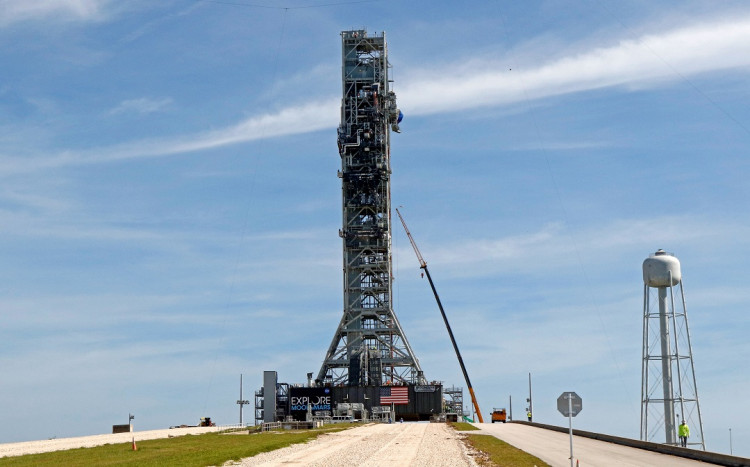Artemis 1 was scheduled to launch from Florida's Kennedy Space Center (KSC) on Tuesday, Sept. 27, according to NASA. Up until last Friday (Sept. 23), that was still the plan, but NASA representatives emphasized that they were closely monitoring Tropical Depression 9, a developing storm in the Caribbean.
Late on Friday, Tropical Depression 9 strengthened into Tropical Storm Ian, which is forecast to gain additional strength. According to the National Hurricane Center, it is moving northward and most forecasts indicate that it will make landfall in Florida by the middle of next week as a major hurricane.
NASA doesn't want the multibillion-dollar Artemis 1 stack - a Space Launch System (SLS) megarocket atop an Orion space capsule - out on the pad in hurricane-force winds, so it's planning a possible rollback to KSC's Vehicle Assembly Building (VAB). And that means a Sept. 27 launch is off the agenda.
"During a meeting Saturday morning, teams decided to stand down on preparing for the Tuesday launch date to allow them to configure systems for rolling back the Space Launch System rocket and Orion spacecraft to the Vehicle Assembly Building," NASA officials wrote in an update. "Engineers deferred a final decision about the roll to Sunday, Sept. 25, to allow for additional data gathering and analysis."
The mission may still be able to launch on Oct. 2 if the crew decides to leave Artemis 1 on the launch pad. However, a reversion to the enormous VAB would almost definitely eliminate that day as well.
Since the middle of August, the Artemis 1 stack has been at Launch Pad 39B at KSC. Technical difficulties prevented NASA from launching the mission on Aug. 29 and Sept. 3, respectively.
The problem on Sept. 3 was a liquid hydrogen propellant leak at an interface between the SLS core stage and the rocket's movable launch tower. The mission team remedied the situation by replacing two seals in the damaged location. On Wednesday (Sept. 21), the success of that fix was demonstrated during a lengthy fueling test on the pad.
The Artemis program, run by NASA, intends to create a permanent human presence on and around the moon by the end of the 2020s. Artemis 1 is the program's first mission. Orion will embark on an unmanned journey to lunar orbit and back on Artemis 1. In 2024, Artemis 2 will launch men around the moon, and in 2025 or 2026, Artemis 3 would land astronauts near the lunar south pole, assuming everything goes according to plan.






